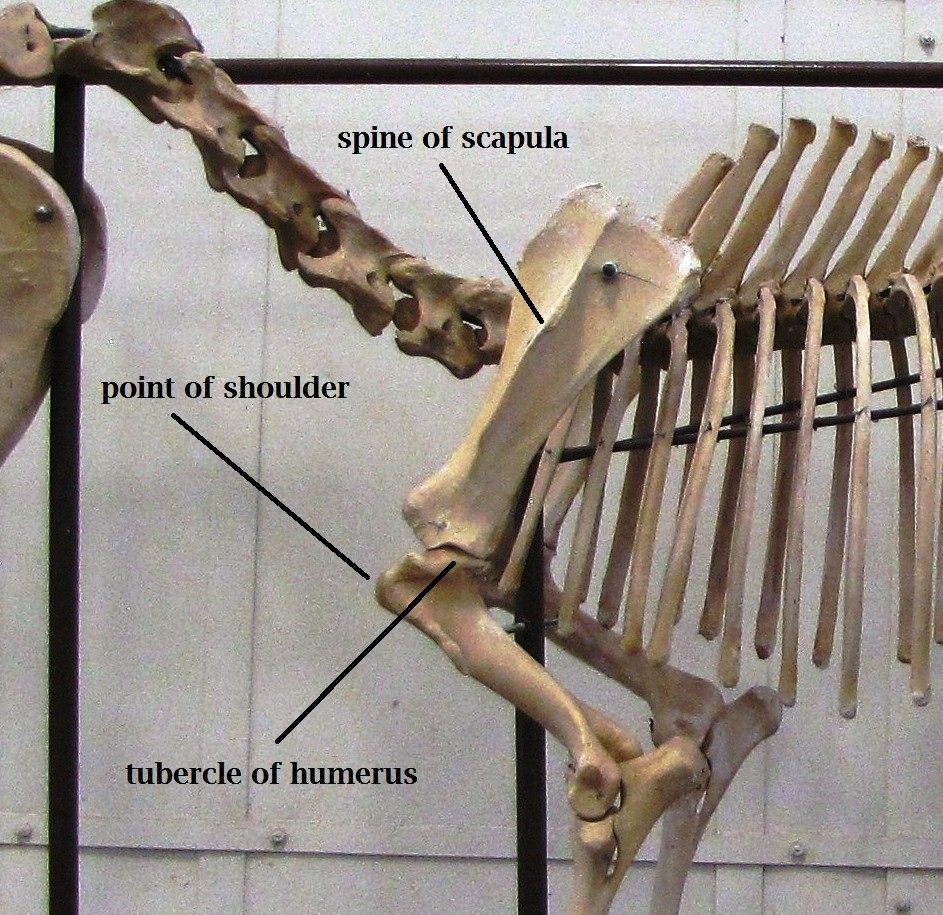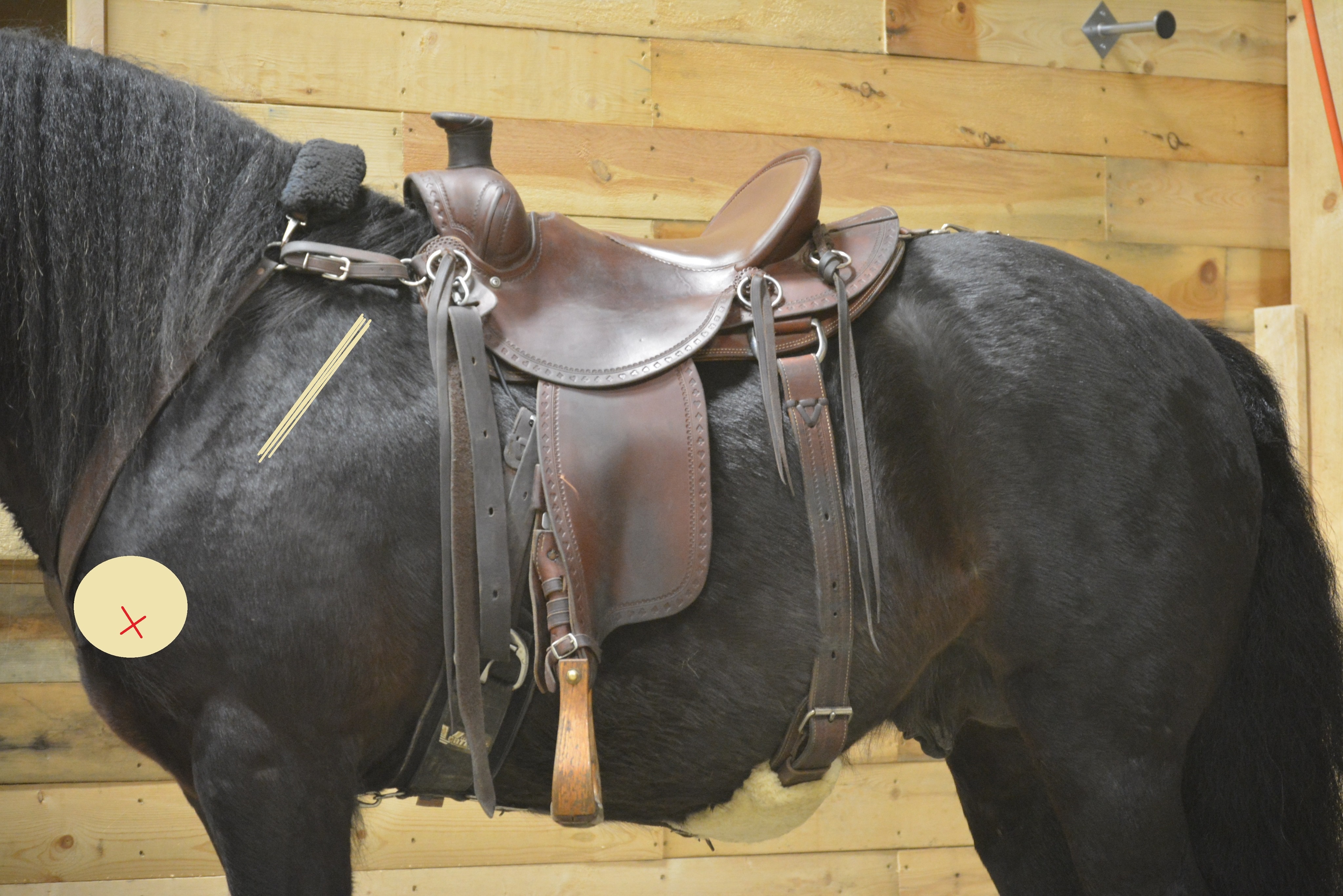
Learn about how the shoulder plays a pivotal role in both Saddle Fit and Harness in this article by guest blogger and published author Jenifer Morrissey. Her book titled ‘Harness Lessons with Doc Hammill and Friends by Jenifer Morrissey’ shows insight into the care of the horse’s health and wellbeing while in harness. Here at NHS, the healthcare of horses is a common goal. Enjoy!
By Jenifer Morrissey
My equine career began with working ponies in harness (think skidding fence rails and logs, moving manure and hay and straw, hauling water, etc.). Because I’m passionate about how I partner with my ponies, I paid attention to what they had to tell me about harness. I was also fortunate to meet and then collaborate with Doug “Doc” Hammill. In addition to his veterinary work, Doc has driven and worked equines in harness and now teaches his Gentle Horsemanship techniques to people in the draft and driving communities. Together Doc and I have written several articles and subsequently a book about how to use harness for the safety, effectiveness and comfort of all involved. My life has now changed to where riding my ponies will be more common, so I’m coming to saddle fit from my experience with harness fit and my desire for the best possible partnership with my ponies.
As you no doubt know, the equine shoulder is absolutely central to the way our equines move. Yet it is also the part of our equine’s anatomy that is most likely to be interfered with by tack of any kind, whether saddles or harness. When we think about saddle fit, we are often worried about the rearward movement of the scapula or shoulder blade. But if we use a breast band with our saddle, there are things we need to consider that are similar to harness fit.
There are three places on the shoulder that are critically important to ensuring the comfort of any equine being used with tack that comes forward of the shoulder blade. While harness is especially likely to impact these three places, no matter whether the type is collar-and-hames or breast-strap, even saddles and especially breast bands may come into contact with these places if not fit properly.

The skeleton illustration here shows the three places of the shoulder area where bones come close to the surface and are easily felt through the skin on most equines. When putting tack or harness on our equines, we need to make sure that tissues aren’t compressed between the tack or harness and these bony landmarks. A collar that is too long can create issues with the point of the shoulder. A collar that is too wide can compress tissues against the spine of the scapula. A breast strap harness strap that is too low could compress tissues against the tubercle of the humerus.
Here is a great lesson from Doc from the book: “Go out and feel your horse in the shoulder area. You’ll quickly realize how close these hard unyielding structures are to the surface; you can really feel them… What I have students do in workshops is to get them to feel for and find the spine of the scapula, then move their hand down the spine of the scapula and feel where it disappears into a softer cushion of muscles. Continuing down and forward over muscle, the hand comes to the bony structures of the point of the shoulder, including the tubercle of the humerus which is slightly above and behind the point of the shoulder.” Ever since I followed Doc’s advice and felt for these bony protuberances on my ponies, I’ve been more aware of when my tack or harness comes close to them.

The picture of a saddled Fell Pony stallion is annotated with the rough locations of the three bony protuberances. The line is on the spine of the scapula. The circle lies over the point of the shoulder, and the red x is on the tubercle of the humerus. In the picture you can just see the breast band lying very close to where a harness collar might go. It’s easy to understand, then, how proper collar fit is needed to ensure the collar doesn’t come close to the places of concern. A quick review of images on the internet suggests that an understanding of those places of concern would benefit many saddle horses wearing breast bands.
There are of course many more considerations when it comes to harness choice and fit; that’s why we have an entire book about it! Any equine whose human is reading this blog, though, is very fortunate indeed. You are concerned for your equine’s comfort, and you recognize that the best performance your equine can give you is when they are comfortable. If Doc’s quick lesson on locating the unyielding parts of the shoulder is new to you, now you too can be watchful of those places when adjusting your tack on your horse, no matter whether it’s for riding, driving, packing, or draft work. Now I’m looking forward to learning as much about saddle fit as I’ve learned about harness fit!
The book Harness Lessons with Doc Hammill and Friends by Jenifer Morrissey is available at dochammill.com and amazon.com. Jenifer Morrissey is also the author of The Partnered Pony and other books, available on amazon.com.
PUBLISHERS NOTE : By Letitia Glenn…
“Our entire team at NHS is thrilled to have your information in our library and consciousness now, Jenifer. Thank you for enlightening us about such nuances as the tubercle of the humerus! Indeed, to be aligned with informed professionals from the horse industry who truly seek the opinions of their equines is an ongoing quest for us. Our saddle systems are designed to protect the bony spine and edges of the scapula, to be sure…but also the protection of the soft tissue responsible for operating it (especially rearward of the scapular spine and entire bone itself whether in standing or moving positions) when carrying saddle and rider weight.
Quite different, it would appear, from pulling weight. We would be curious to understand more about the impact on of an over-the-neck connecting strap for the wings of a breast collar (such as illustrated in your photo). Clearly, it is helpful to keep the collar from rubbing the tubercle. But what would be the result of ongoing pressure on neck crest structure?
Non-negative-impact saddle fit has been a challenging thing to achieve. Over the course of many years of product/methodology development, we’re proud to have done the best we’ve seen thus far. You are right: freedom of shoulder movement is key to efficient biomechanics of the horse’s entire body. Also, opening up the back takes comfort and stride quality to an even higher dimension. Thanks again!”
